Back to FabImage Library website

You are here: Start » Function Reference » Computer Vision » Deep Learning » MergeCharactersIntoLines
MergeCharactersIntoLines
| Header: | FIL.h |
|---|---|
| Namespace: | fil |
| Module: | DL_OCR |
Converts a output of Deep Learning filter DL_ReadCharacters to lines of text.
Syntax
void fil::MergeCharactersIntoLines ( const ftl::Array<fil::OcrResult>& inCharacters, float inMaxGap, float inMaxShift, float inMargin, int inMinLength, bool inFlatten, const fil::GrammarRulesPattern& inPattern, ftl::Optional<const ftl::Array<ftl::Array<fil::OcrCandidate>>&> inCandidates, float inMinScore, ftl::Array<fil::Rectangle2D >& outLines, ftl::Array <ftl::String >& outStrings, ftl::Array< ftl::Conditional<int> >& outMapping, ftl::Array<float>& outScores, ftl::Array<fil::OcrResult>& outProcessedCharacters )
Parameters
| Name | Type | Range | Default | Description | |
|---|---|---|---|---|---|
 |
inCharacters | const Array<OcrResult>& | Output of DL_ReadCharacters | ||
 |
inMaxGap | float | 0.0 - 10.0 | 0.25f | Maximum horizontal gap between joint characters' boxes, denoted as fraction of 'A' char height |
 |
inMaxShift | float | 0.0 - 1.0 | 0.25f | Maximum vertical misalignment between joint character's boxes, denoted as fraction of 'A' char height |
 |
inMargin | float | 0.0 - 10.0 | Additional margin added to result, denoted as fraction of 'A' char height | |
 |
inMinLength | int | 1 - 200 | 1 | Minimal number of chars to create line |
 |
inFlatten | bool | False | If True, it concatenates the words on the line into a single result string, otherwise each word is a separate result string | |
 |
inPattern | const GrammarRulesPattern& | Pattern used in Grammar rules filtering | ||
 |
inCandidates | Optional<const Array<Array<OcrCandidate>>&> | NIL | Candidates - optional output of DL_ReadCharacters, Required when using grammar rules (when inPattern is not empty) | |
 |
inMinScore | float | 0.0 - 1.0 | 0.2f | Minimum score for filtering the line of text |
 |
outLines | Array<Rectangle2D >& | Minimal Box which cover all selected character boxes | ||
 |
outStrings | Array <String >& | Text of merged characters | ||
 |
outMapping | Array< Conditional<int> >& | Mapping between input characters and output lines, outMapping[i] stores the index line to which inCharacters[i] belongs. If outMapping[i] is NIL it means that inCharacters[i] has not been added to any line | ||
 |
outScores | Array<float>& | Calculated the score for the line | ||
 |
outProcessedCharacters | Array<OcrResult>& | Contains the full set of character results after grammar rule processing. Maintains a one-to-one correspondence with inCharacters, preserving original positions but possibly with modified values, scores, or other attributes based on grammar rule application. |
Description
This tool takes the text contained in OcrResultArray from the DL_ReadCharacters and merges it into lines.
Note: To use grammar rules the inputs: inCharacters, inPattern, inCandidates are required
Pattern elements can be:
Grammar Rules:
This feature can be used if we know the structure of the text we want to read. Define the inPattern string that you want to match against OCR results using regex syntax. This function uses more internal information inCandidates from Deep Learning filter DL_ReadCharacters to achieve the best matching to inPattern. Pattern is concatenation of pattern element.Note: To use grammar rules the inputs: inCharacters, inPattern, inCandidates are required
Pattern elements can be:
- Individual character: one of character supported in DL_ReadCharacters
- Escaping operational characters: Use a backslash to treat operational characters as normal:
\\, \*, \?, \., \+, \-, \], \[, \), \(. - Whitespace Macro: \s represents a whitespace character (applicable only if inFlatten = True), space is also supported.
- Character class is a set of characters enclosed within square brackets []. It allows you to match any one character from the specified set. Example of usage:
- List of characters:
[abc]Matches any one of the characters a, b, or c. - Range:
[a-z]Matches any one of the characters from a to z. - Mix of them:
[a-zA-Z12]Matches any one of the characters from a to z, A to Z and 1,2. - Predefined character classes:
-
\dis equivalent to[0-9] -
\wcorresponds to[a-zA-Z0-9_] - . (dot) matches any single character (\w plus special characters )
Ex.[a.*|]is valid pattern which matches with the characters: a,.,*,|. - List of characters:
- Chain is an extended string created by concatenating individual characters and character classes. Instance:
-
abc- matches textabc -
[Aa]bc- matches texts:abc and Abc -
\dabc- matches texts:0abc, 1abc, ..., 9abc
-
- Alternative is used to match one pattern or another. It's sequence of chains separated by pipe symbol | in round brackets (). Demonstration:
-
(abc|def)matches texts:abc and def -
([Aa]bc|\dabc)matches texts:abc, Abc, 0abc, 1abc, ..., 9abc
Note: Round round brackets are required. Ex.a|b
Note: Nested brackets aren't supported. Ex.(a|(b|c)) -
- Special operators can modify or repeat the preceding expression.
- * (star): means zero or more occurrences of the preceding expression (in particular ".*" means any sequence), but tries to match as many characters as possible
- + (plus): means one or more occurrences of the preceding element, maximizing the number of characters matched.
- ? (question mark): means zero or one occurrence of the preceding element, with a preference for one.
- *? (lazy star): means zero or more occurrences of the preceding expression, but tries to match as few characters as possible.
- +? (lazy plus): means one or more occurrences, but minimizes the number of characters matched.
Note: Special operators cannot be used inside alternative: Ex.(a*|b)
Hints
- Depending on the inMaxGap and inMaxShift values, we can get different number of lines. See the image below, where increasing the inMaxGap results
in one line of text, whereas a smaller value will return two separate lines:
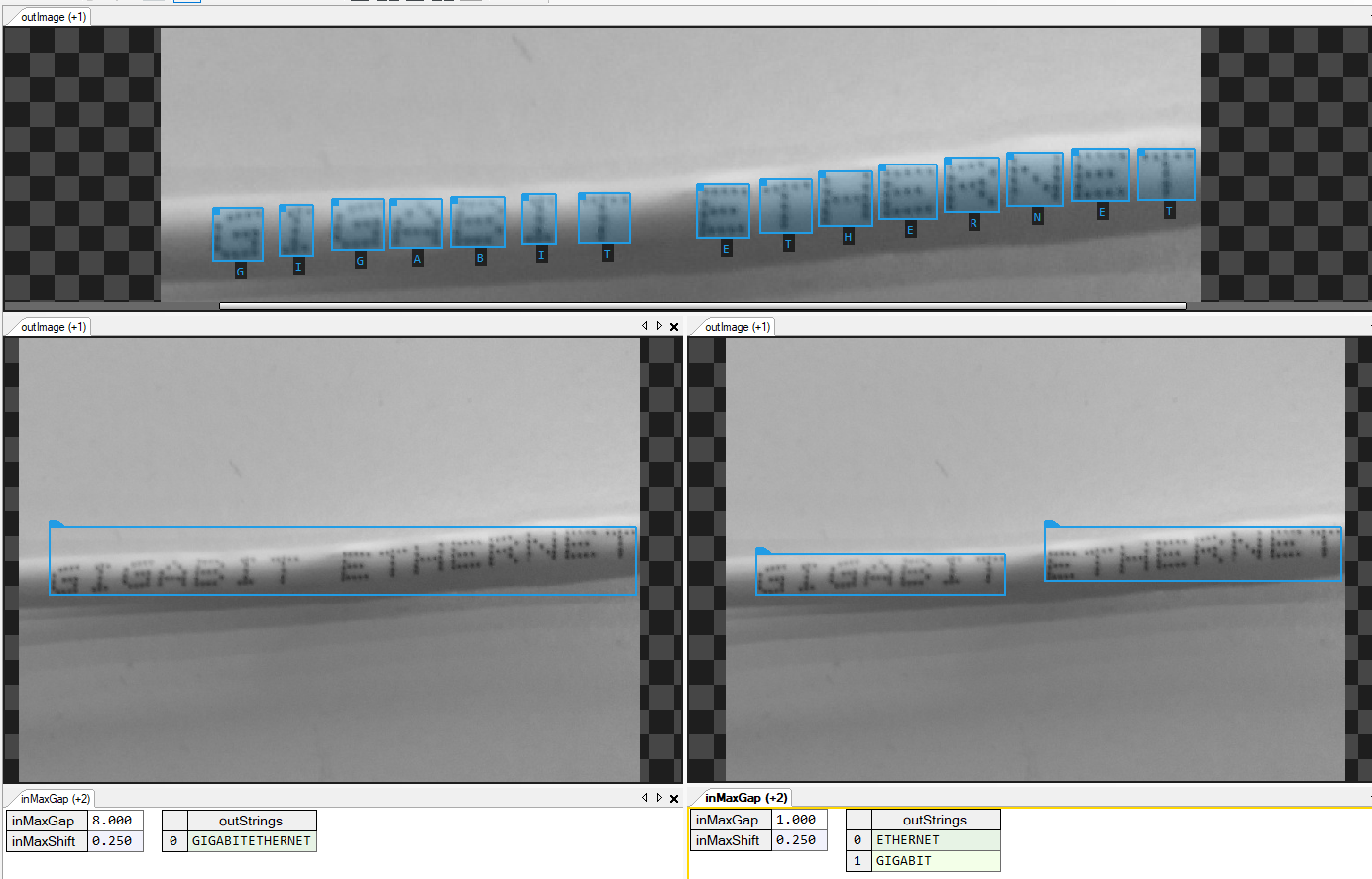
- The lines are sorted by the Y value, e.g.:
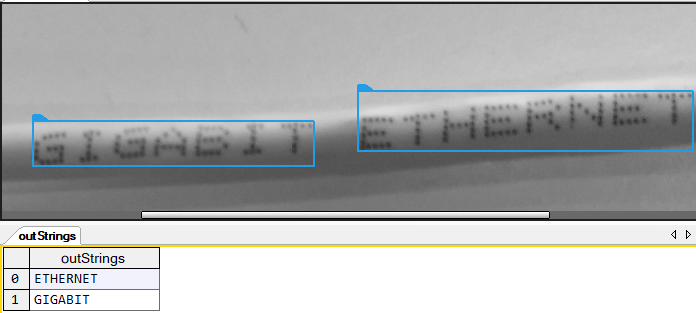
- The tool can also be used to get rid of false characters by setting a different value of the inMinLength parameter. In the image below setting the
inMinLength to 2 resulted in filtering out single false characters returned by the FisFilter_DL_ReadCharacters tool.
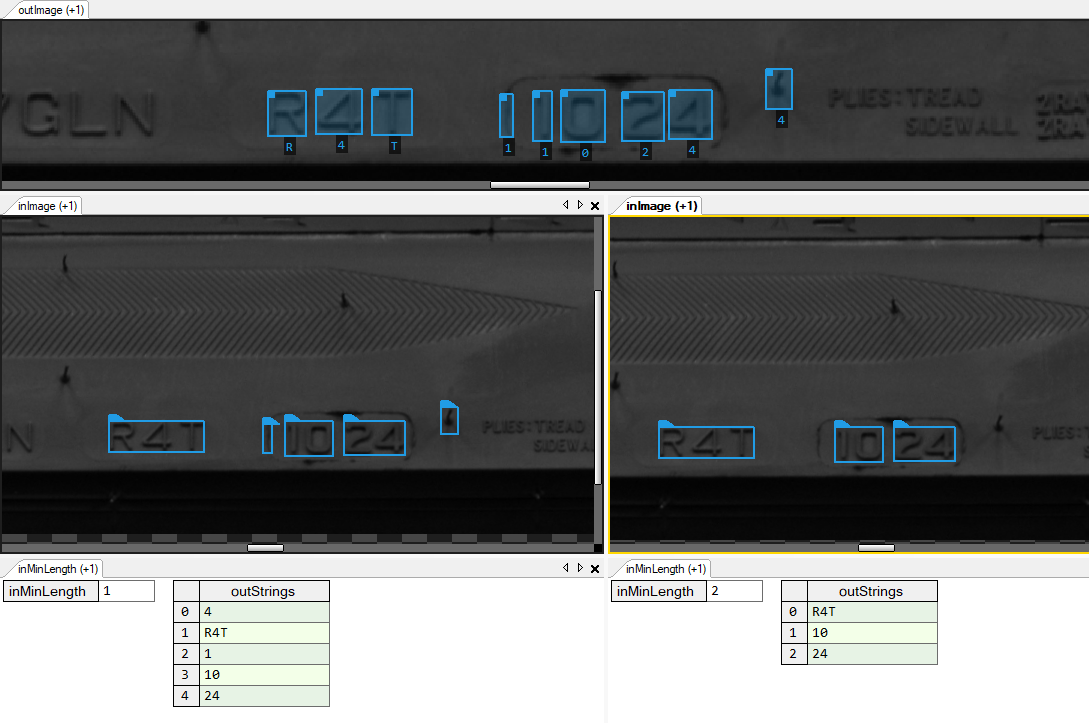
Examples
Using of grammar rules:
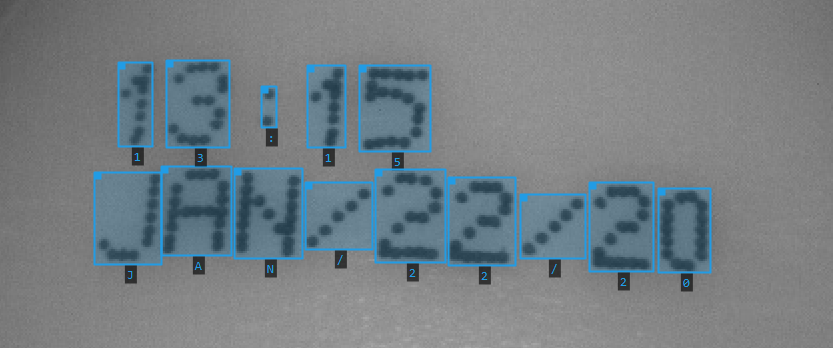
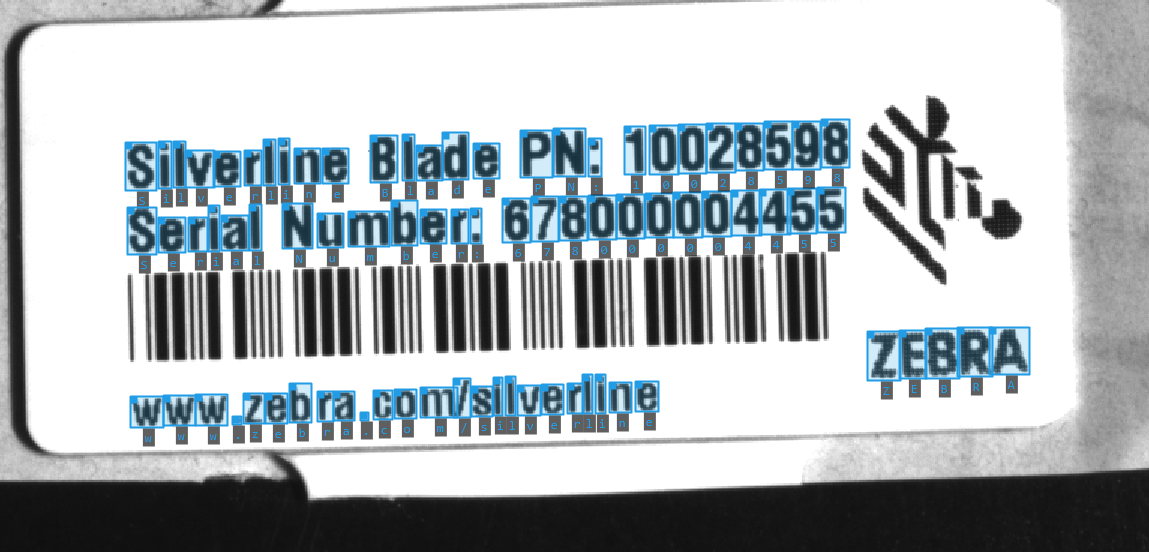
1. To find date on this image:

inPattern= (JAN|FEB|MAR|APR|MAY|JUN|JUL|AUG|SEP|OCT|NOV|DEC)/\d\d/\d\d
outStrings= [JAN/22/20]
2. Finding website address:

inPattern= www\.[a-z]+\.com[a-z/]*
outStrings= [www.zebra.com/silverline]
3. To get serial number:
inPattern= Serial Number: \d+
outStrings=[Serial Number: 678000004455]
Errors
List of possible exceptions:
| Error type | Description |
|---|---|
| DomainError | If you want to use grammar rules, please add inCandidates from filter DL_ReadCharacters.outCandidates and set True value on DL_ReadCharacters.inCalculateCandidates. |
| DomainError | inCandidates and inCharacters must have the same size. |
See Also
- FisFilter_DL_ReadCharacters – Performs optical character recognition using a pretrained deep learning model.

